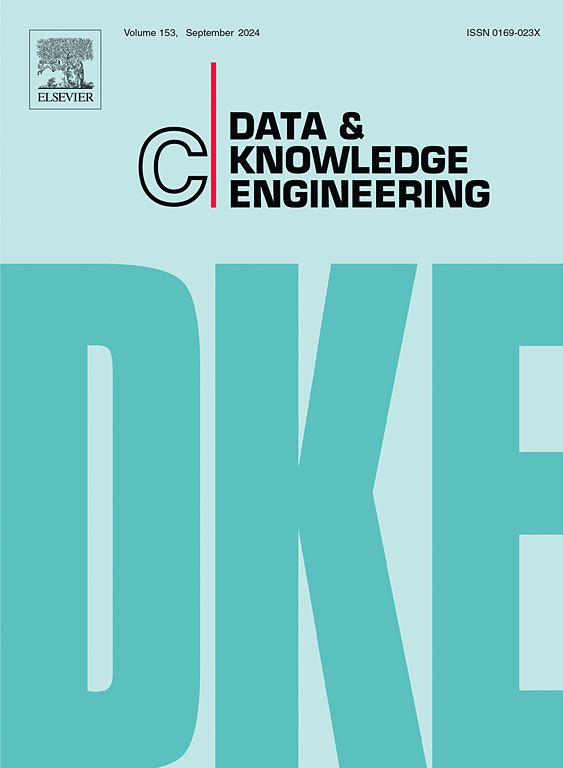RankT:基于秩-三重体的知识图链接预测对抗学习
IF 2.7
3区 计算机科学
Q3 COMPUTER SCIENCE, ARTIFICIAL INTELLIGENCE
引用次数: 0
摘要
为了弥补知识图中实体之间缺失的边,提出了许多最先进的模型来预测链接。这些模型主要侧重于预测具有一定关系的源实体和目标实体之间的链接得分,而忽略了不同子图中三元组整体意义的相似性或差异性。然而,三元组以不同的方式相互作用,链路预测模型可能缺乏交互。换句话说,链接预测叠加了潜在的三重不确定性。为了解决这个问题,我们提出了一个基于rank - triplet的不确定性对抗学习(RankT)框架,以改进用于链接预测的三元组的嵌入表示。该模型首先通过节点级邻域聚合和边缘级邻域聚合分别计算节点和边缘嵌入,然后通过自关注转换器对嵌入进行融合,得到三元组的交互嵌入。其次,为了降低预测链路概率分布的不确定性,设计了基于最高确定性和最高不确定性链路对抗的排序三元组对抗损失函数;最后,为了增强对抗学习的稳定性,设计了一种基于排序三重体的一致性损失,使最高正链路的概率收敛在同一方向上。烧蚀实验表明了模型各部分的有效性。实验结果的比较表明,我们的模型明显优于目前最先进的模型。综上所述,该模型在发现三元组的相似或不同含义的同时提高了链路预测性能。本文章由计算机程序翻译,如有差异,请以英文原文为准。
RankT: Ranking-Triplets-based adversarial learning for knowledge graph link prediction
Aiming at completing the missing edges between entities in the knowledge graph, many state-of-the-art models are proposed to predict the links. Those models mainly focus on predicting the link score between source and target entities with certain relations, but ignore the similarities or differences of the whole meanings of triplets in different subgraphs. However, the triplets interact with each other in different ways and the link prediction model may lack interaction. In other word, the link prediction is superimposed with potential triplet uncertainties. To address this issue, we propose a Ranking-Triplet-based uncertainty adversarial learning (RankT) framework to improve the embedding representation of triplet for link prediction. Firstly, the proposed model calculates the node and edge embeddings by the node-level and edge-level neighborhood aggregation respectively, and then fuses the embeddings by a self-attention transformer to gain the interactive embedding of the triplet. Secondly, to reduce the uncertainty of the probability distribution of predicted links, a ranking-triplet-based adversarial loss function based on the confrontation of highest certainty and highest uncertainty links is designed. Lastly, to strengthen the stability of the adversarial learning, a ranking-triplet-based consistency loss is designed to make the probability of the highest positive links converge in the same direction. The ablation studies show the effectiveness of each part of the proposed model. The comparison of experimental results shows that our model significantly outperforms the state-of-the-art models. In conclusion, the proposed model improves the link prediction performance while discovering the similar or different meanings of triplets.
求助全文
通过发布文献求助,成功后即可免费获取论文全文。
去求助
来源期刊

Data & Knowledge Engineering
工程技术-计算机:人工智能
CiteScore
5.00
自引率
0.00%
发文量
66
审稿时长
6 months
期刊介绍:
Data & Knowledge Engineering (DKE) stimulates the exchange of ideas and interaction between these two related fields of interest. DKE reaches a world-wide audience of researchers, designers, managers and users. The major aim of the journal is to identify, investigate and analyze the underlying principles in the design and effective use of these systems.
 求助内容:
求助内容: 应助结果提醒方式:
应助结果提醒方式:


